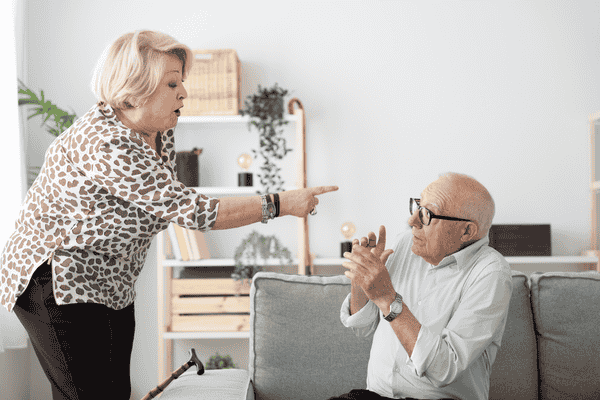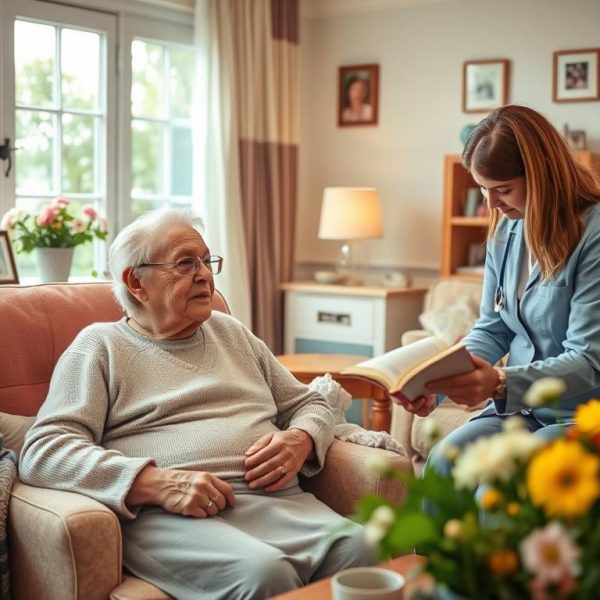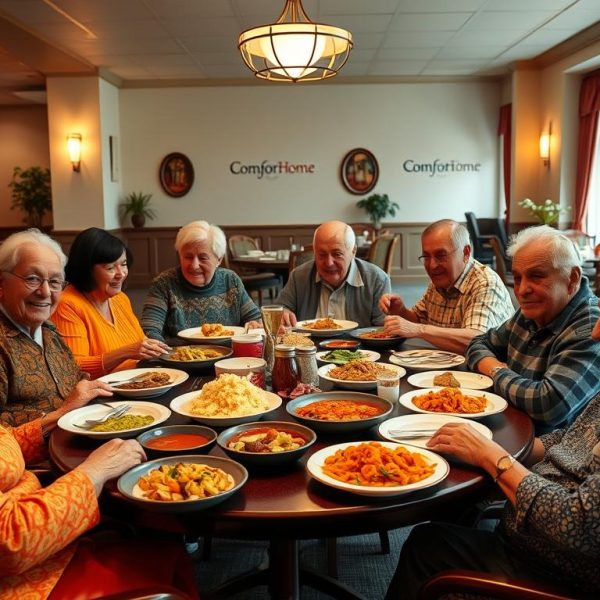Martha had always been the pillar of her family—strong, independent, and determined. Even in her later years, she prided herself on staying active and involved. But as her health began to decline, she found herself relying more on her son, Peter, to help manage her affairs. At first, everything seemed fine, but as time passed, Martha noticed subtle changes in Peter’s behavior. His once compassionate nature began to shift into impatience, and before long, Martha was left feeling isolated, confused, and, worst of all, fearful of the person she loved most. She never imagined that she would be a victim of elder abuse.
Martha’s story, like so many others, highlights a harsh reality that too many elderly individuals face. Elder abuse, which can manifest in physical, emotional, financial, or even sexual harm, is a deeply painful experience for the victim. For caregivers and families, ensuring the safety and well-being of older adults is not only a moral obligation but a legal one as well. Fortunately, there are protections in place to help safeguard seniors from abuse, and it’s crucial that caregivers, family members, and communities are aware of the legal measures available to protect the elderly.
In this blog, we’ll explore the importance of recognizing elder abuse, the legal protections designed to prevent it, and the key steps you can take to safeguard your loved ones.
Understanding Elder Abuse: A Hidden Crisis
Before diving into the legal protections available, it’s important to understand what elder abuse is and why it’s often underreported. Elder abuse can take many forms, including:
- Physical abuse: The use of physical force that results in injury, pain, or impairment.
- Emotional or psychological abuse: Verbal assaults, threats, intimidation, or isolation that cause emotional distress.
- Financial exploitation: Unauthorized use of an elderly person’s funds, property, or assets.
- Neglect: Failure to provide necessary care, resulting in harm or distress to the senior.
- Sexual abuse: Non-consensual sexual contact or exploitation.
In Martha’s case, her son, Peter, was guilty of financial exploitation. Over time, he had slowly drained her savings without her knowledge, leaving her in a precarious financial situation. But elder abuse isn’t always so easy to spot. Victims may be too ashamed to speak out, or they may fear retaliation from their abusers. In some cases, seniors may not even realize they are being abused.
This is why recognizing the signs of abuse is critical. Caregivers, family members, and community members should be vigilant in looking for changes in behavior, unexplained injuries, sudden financial difficulties, or increased isolation, all of which may signal that an older adult is being mistreated.
Legal Protections for Seniors
While the emotional toll of elder abuse is devastating, it’s important to know that there are legal measures in place to protect seniors and hold abusers accountable. Martha eventually found the courage to reach out to a trusted neighbor, who helped her seek legal assistance and begin the process of reclaiming her life.
Here are key legal measures and protections available against elder abuse:
1. Adult Protective Services (APS)
One of the first lines of defense against elder abuse is Adult Protective Services (APS). APS agencies exist in every state and are responsible for investigating reports of elder abuse, neglect, or exploitation. These agencies work closely with law enforcement, legal authorities, and social services to protect vulnerable adults.
In Martha’s case, once she reached out for help, APS was contacted. A caseworker visited her home, assessed the situation, and determined that she was indeed a victim of financial exploitation. The agency worked with law enforcement to investigate the abuse and helped Martha regain control of her finances.
APS services are confidential, and their primary goal is to protect the senior while respecting their autonomy. If you suspect elder abuse, contacting APS can be an important first step in seeking help.
2. Power of Attorney Abuse and Legal Remedies
One of the most common forms of financial exploitation occurs when a person abuses the authority granted through a power of attorney (POA). A POA gives an appointed individual the legal right to make decisions on behalf of an elderly person. While this is often done with the best intentions, it can be misused, as was the case with Peter.
In cases where the appointed person abuses their power, legal actions can be taken to revoke the POA and hold the individual accountable for financial harm. Martha’s lawyer helped her file a legal action to revoke Peter’s power of attorney and recover some of her lost assets. The courts may also order restitution, ensuring that the wrongfully taken money is returned to the elderly person.
3. Conservatorships and Guardianships
When seniors are no longer able to make sound decisions about their own affairs, the court may appoint a conservator or guardian to oversee their well-being and financial matters. This is often used as a protective measure when an elderly person is at risk of abuse or exploitation.
For some seniors, such as those with dementia or cognitive decline, having a legal guardian can be an effective way to ensure their protection. Courts take the appointment of guardians and conservators very seriously, as it involves taking away certain rights from the senior. Therefore, it’s used only in cases where the senior’s safety and well-being are truly at risk.
4. Restraining Orders and Protective Orders
When abuse becomes a direct threat to a senior’s safety, a restraining order or protective order can be issued by the court. These orders prohibit the abuser from contacting or coming near the victim, providing immediate protection.
In cases of physical abuse, emotional abuse, or severe neglect, caregivers and family members can help the elderly individual file for a protective order. The abuser may face criminal charges if they violate the terms of the order. For Martha, knowing that there were legal protections in place made her feel safer and more secure in her own home.
5. Criminal Charges for Elder Abuse
Elder abuse is a crime in many states, and offenders can face serious consequences if convicted. States have varying laws regarding elder abuse, but many have enacted elder abuse statutes that impose criminal penalties for perpetrators.
In cases of physical or sexual abuse, law enforcement may press charges against the abuser. Even in cases of financial exploitation, the perpetrator may face criminal charges if they are found guilty of theft or fraud.
Peter’s actions, while initially seen as a family matter, escalated to criminal charges once it was clear that he had intentionally exploited his mother’s finances. The criminal justice system played a vital role in holding him accountable.
6. Reporting to Law Enforcement
If elder abuse is suspected, family members or caregivers should not hesitate to contact law enforcement. Police officers can investigate the abuse, gather evidence, and, if necessary, make arrests. In some cases, the involvement of law enforcement can prevent further harm and ensure the elderly person’s immediate safety.
Empowering Seniors and Their Families: Taking Action
Legal measures and protections are only effective if seniors and their families are empowered to take action. For Martha, it was the support of her neighbor and the willingness to seek legal assistance that ultimately made the difference in her case. Here are steps you can take to protect the elderly in your life:
1. Educate Yourself and Others
Understanding the signs of elder abuse is the first step in preventing it. Take the time to learn about the different types of abuse and the legal protections available. Share this information with family members, caregivers, and community members to raise awareness.
2. Encourage Open Communication
Seniors, like Martha, may feel hesitant to speak out about abuse, especially if the abuser is a family member. Creating an environment where open communication is encouraged can help victims feel safe coming forward. Encourage elderly individuals to talk about their experiences and feelings without fear of judgment.
3. Create a Safety Plan
For seniors who are at risk of abuse, having a safety plan in place can be life-saving. This plan might include identifying trusted individuals they can call in an emergency, having important documents and financial records secured, and knowing how to contact APS or law enforcement.
4. Seek Legal Help
If you suspect elder abuse, consulting with an attorney who specializes in elder law can provide valuable guidance. Lawyers can help seniors take legal action, whether it’s revoking a power of attorney, obtaining a restraining order, or filing for guardianship.
5. Involve the Community
Communities play a vital role in protecting seniors. Local organizations, faith groups, and senior centers can provide resources, support, and a safe space for elderly individuals. By staying connected to the community, seniors are less likely to become isolated—a common factor in elder abuse cases.
Conclusion: Protecting Those Who Once Protected Us
Martha’s story is a reminder that elder abuse can happen to anyone, even those with strong support systems. But it’s also a testament to the power of legal protections and the importance of speaking out.
By understanding the legal measures available to prevent elder abuse—such as Adult Protective Services, powers of attorney, conservatorships, and restraining orders—caregivers and families can take proactive steps to safeguard the rights and well-being of seniors. Whether you are a caregiver, a family member, or a concerned community member, you have the ability to make a difference in the lives of vulnerable older adults. Through education, vigilance, and legal action, we can protect those who once protected us.








